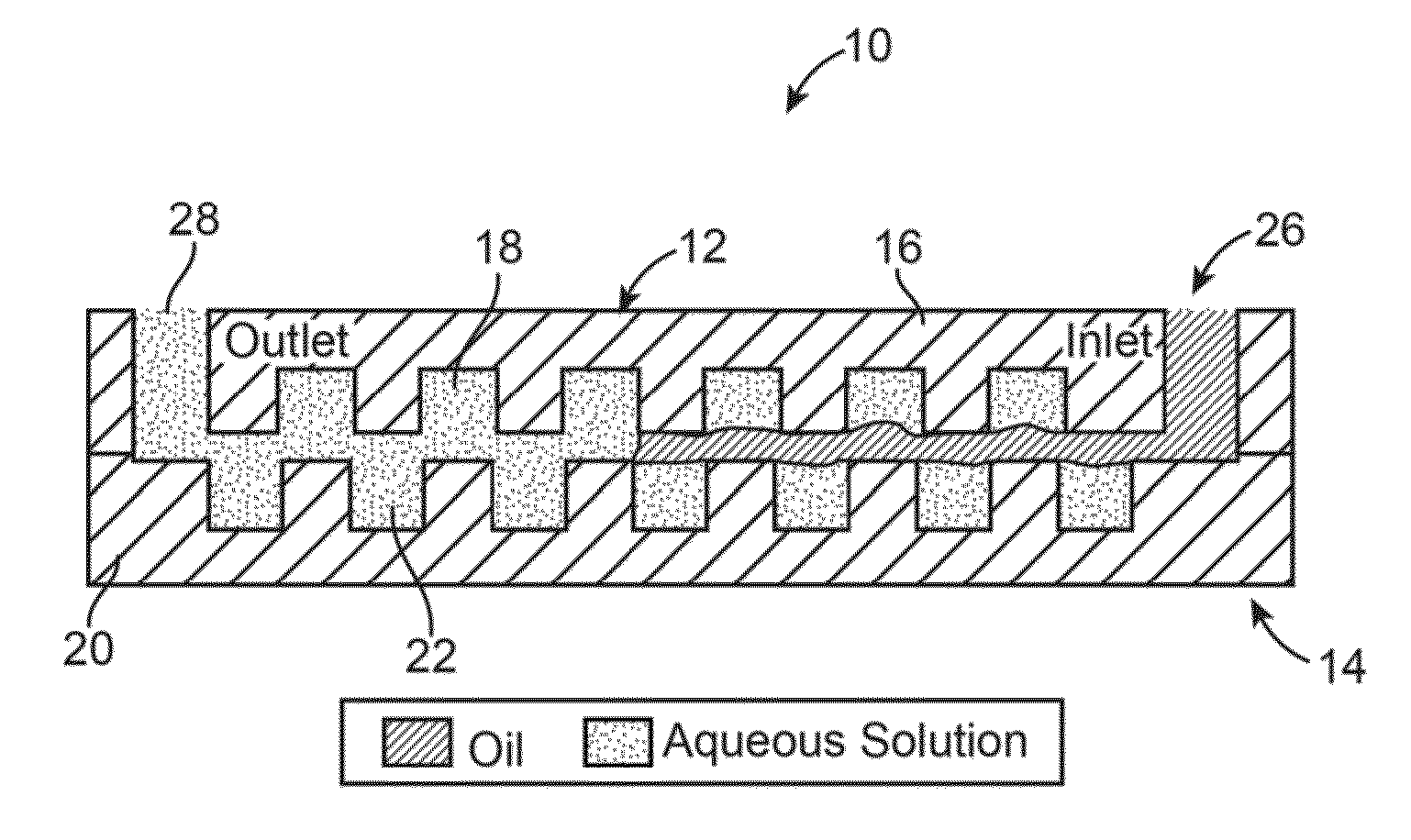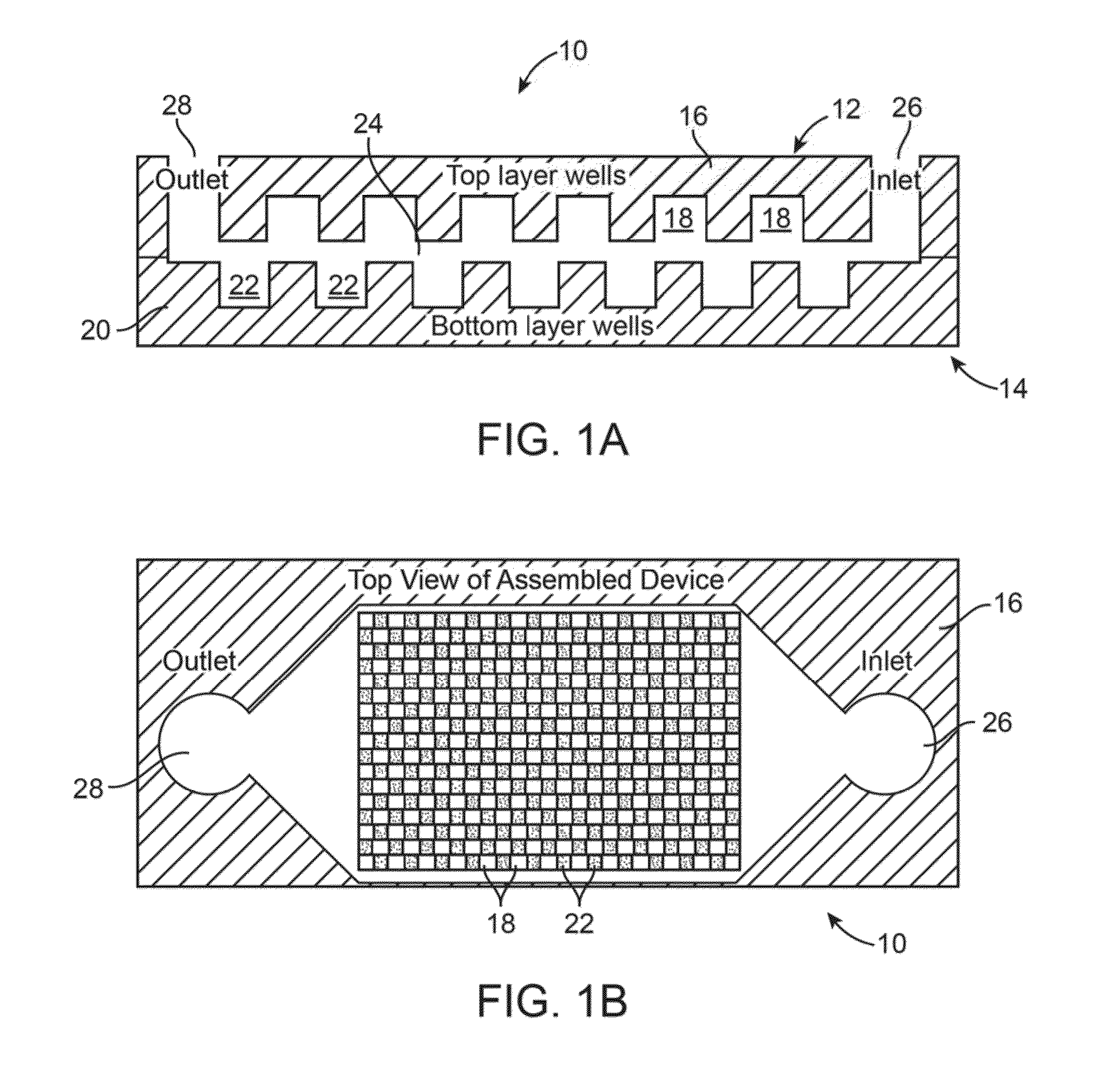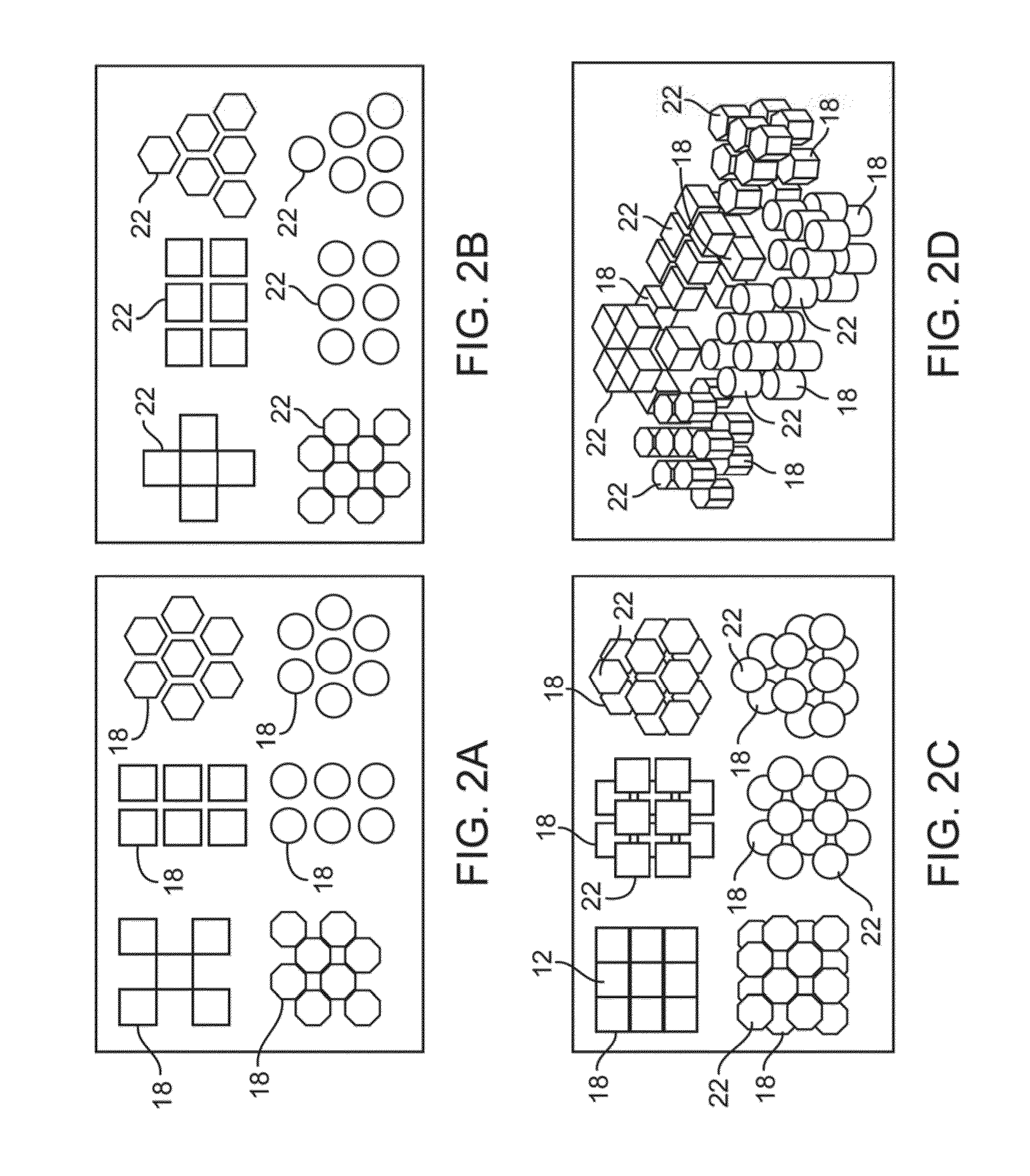Multilayer high density microwells
a high-density, multi-layer technology, applied in the field of microwells and microarrays, can solve the problems of large usable area between the microwells, large loss of usable space, and exponential decrease of the ratio of usable microwell area to dead space, so as to improve image sensor area coverage efficiency, increase the density of the microwell array, and improve the effect of reactor array density
- Summary
- Abstract
- Description
- Claims
- Application Information
AI Technical Summary
Benefits of technology
Problems solved by technology
Method used
Image
Examples
Embodiment Construction
[0021]FIGS. 1A and 1B illustrate side and top views, respectively, of a multilayer well device 10 according to one embodiment. The multilayer well device 10 is illustrated in FIGS. 1A and 1B as containing two (2) layers 12, 14. The upper layer 12 is formed from a first substrate 16 and contains therein an array of wells 18 having a first pattern. The first substrate 16 is preferably made from an optically transparent material which can include, as mentioned below, a polymer-based material. The lower layer 14 is formed from a second substrate 20 and contains therein an array of wells 22 having a second pattern that is complementary to the first pattern. As seen in FIG. 1A, the wells 22 of the second substrate 20 are laterally offset from the corresponding wells 18 of the first substrate 16. The second substrate 20 is also preferably made from an optically transparent material which can be the same as the material used for the first substrate 16.
[0022]The size of the wells 18, 22 may ...
PUM
| Property | Measurement | Unit |
|---|---|---|
| height | aaaaa | aaaaa |
| height | aaaaa | aaaaa |
| diameter | aaaaa | aaaaa |
Abstract
Description
Claims
Application Information
 Login to View More
Login to View More - R&D
- Intellectual Property
- Life Sciences
- Materials
- Tech Scout
- Unparalleled Data Quality
- Higher Quality Content
- 60% Fewer Hallucinations
Browse by: Latest US Patents, China's latest patents, Technical Efficacy Thesaurus, Application Domain, Technology Topic, Popular Technical Reports.
© 2025 PatSnap. All rights reserved.Legal|Privacy policy|Modern Slavery Act Transparency Statement|Sitemap|About US| Contact US: help@patsnap.com



